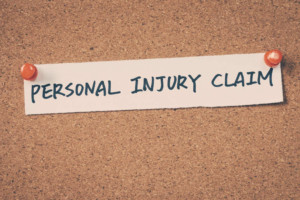
When a person is involved in an accident, one of the furthest things from their mind will be to hire an attorney, which is understandable. Many will want to seek medical treatment and begin the recovery process as soon as possible. However, without an attorney, a person injured in an accident may not be able to seek a successful recovery.
Briefly, the stages of a personal injury claim are as follows:
– Meet with your attorney.
– File court papers, such as a complaint.
– The discovery process.
– Motions to settle or resolve, before trial.
– If the case cannot settle, a trial will then occur at this point.
– Verdict at trial.
– Collecting your payment after the verdict has been reached.
While many people believe that the personal injury claim process ends at step six, a person seeking the payment must take action to collect on a judgment. Additionally, if a claim is denied, an eighth step will be added for an appeals process. Below are the steps of a personal injury claim.
1. Consult Attorney.
Once an injury victim, or their family, meet with an attorney, the steps, or stages, of a personal injury claim will be reviewed in full, in addition to their rights and responsibilities at the current time. Meeting with a personal injury attorney is the first step in filing a claim and seeking compensation. Talking to your attorney will be of the utmost importance; the attorney that you choose to work with will be your only hope to secure the settlement that you seek. Whether you have been injured in a car accident, motorcycle accident or on another person’s property, it will be vitally important that your lawyer is familiar with all of these types of claims.
2. Filing Court Papers, Such As A Complaint.
All necessary court documents, including Complaints, Answers, and any other necessary court documents, or motions, required to start the lawsuit should be filed as soon as possible.
3. The Discovery Process.
After this has been successfully and flawlessly completed, your attorney is expected to meticulously examine the case, and get information from both sides of the accident to establish fault and negligence. Based on this, you will either be more inclined to be awarded compensation or have to take responsibility for the damages.
4. Resolving Before Trial.
At this point, if your attorney has collected evidence proving that the other party is at fault for the accident and that your injuries were a direct result of the accident, you may be able to settle out of court. If the opposing party’s insurance company is willing to offer you a settlement in which your attorney believes will cover the full extent of any property damage, injuries and medical expenses, and non-economic damages (such as pain and suffering), then you will be able to resolve the case here. If not, the case will move forward to step five.
5. A trial in Court.
At this point, you will hear your case in front of a jury, who will decide if you should be awarded financial compensation, and if so, how much. After their verdict has been reached, you will then need your at attorney’s help to ensure that your settlement is collected in full.
During a personal injury case, at every single stage, it is important to have the services of a personal injury attorney. Without legal representation, it is close to impossible to fully maximize the amount of your personal injury claim, and you may be left with the responsibility of paying for all of the damages.
Our personal injury attorneys are prepared to give their best effort for your case. They are known for their ability to provide high quality and effective legal representation for all injury victims. In case you have any issues do not hesitate to consult them by visiting mlylaw.com.